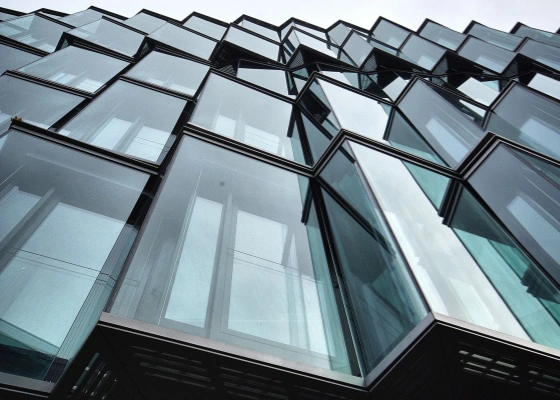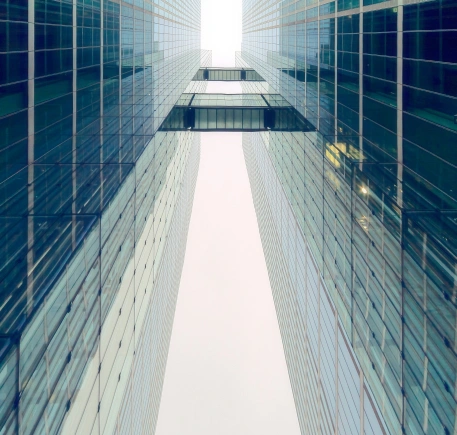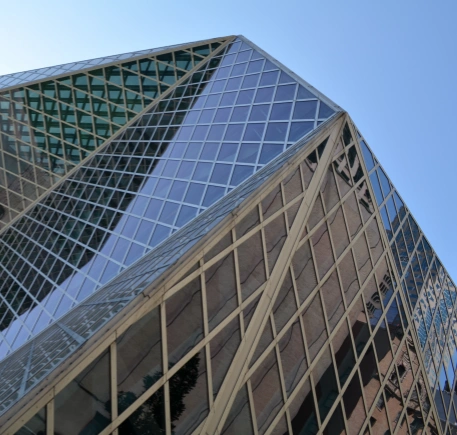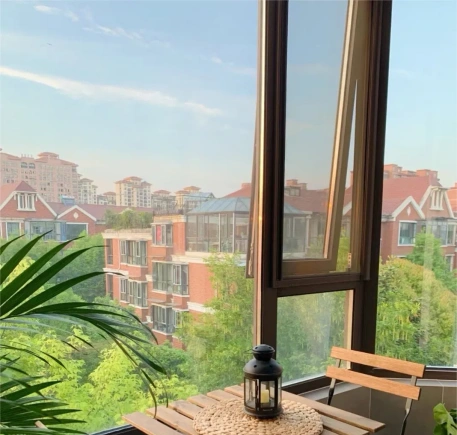Glasvue’s energy efficiency glass combines different types of glass into various structures, effectively blocking infrared rays and maintaining a stable indoor temperature. This ultimately helps buildings achieve energy conservation and emission reduction.
Online Low-E: Features a higher emissivity, moderate thermal insulation, and a higher shading coefficient. Ideal for colder regions, primarily for heat retention. While its thermal insulation is slightly less effective than Offline Low-E, it surpasses that of heat-reflective coatings.
Single Silver Low-E: Exhibits low emissivity , excellent thermal insulation, and adjustable shading coefficients. Offers superior overall performance, making it suitable for hot climates or scenarios requiring both insulation and heat resistance.
Offline Multi-Silver Low-E: Boasts even lower emissivity, reduced shading coefficients, and higher light-to-solar gain ratios (Double Silver ≥1.5, Triple Silver ≥1.9). Provides enhanced insulation and heat resistance, ideal for regions with stringent energy efficiency requirements.
Heat-Reflective: Lacks low-emissivity properties; primarily reduces solar radiation transmission for shading purposes. Suitable for standalone use in applications requiring sun shading.
When laminated glass incorporates specialized thermal interlayer films, it effectively absorbs solar radiation, reducing heat transfer into the interior. Combined with the safety benefits of laminated glass, this thermal laminated glass is ideal for applications demanding both energy efficiency and safety, such as skylights or high-rise buildings.



Climatic Zones: Different climatic zones have varying focuses on the energy – efficiency of glass. In regions with long winters, glass with a relatively high shading coefficient should be selected to reduce winter heating costs. Conversely, in areas with long summers, glass that can effectively block direct solar radiation.
Safety Requirements: For building skylights, rooflights, and safety guardrail glass related to protective safety, laminated glass must be used. Employing special heat – insulating PVB films can endow laminated glass with excellent heat – insulating properties.
Decorative Requirements: Utilizing coated glass or laminated glass in different colors can enable buildings to have a wider range of color combinations while simultaneously meeting your energy – saving requirements.




Sure, as long as you provide GLASVUE with the glass parameters you need, such as U-value, solar shading coefficient, etc., GLASVUE can design a suitable glass solution for you.
No, energy-saving glass does not refer to a single type of glass, but rather a general term for a category of glass with energy-saving properties. This type of glass usually has energy-saving characteristics such as heat preservation and heat insulation, which can help buildings save on heating and cooling costs, thus achieving energy conservation and emission reduction. The following types of glass can all be considered energy-saving glass: reflective glass, low-e glass, insulated glass.
Experience the quality of GLASVUE glass firsthand with a complimentary sample tailored to your project requirements.
Let us design a glass solution that perfectly aligns with your unique architectural vision and technical specifications.
Access detailed technical data sheets for GLASVUE’s architectural glass products, including performance metrics and installation guidelines.
Gain inspiration from our curated collection of successful GLASVUE installations worldwide, showcasing innovative applications of architectural glass.
© All Copyright 2024 by GLASVUE | Privacy Policy